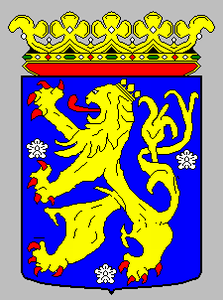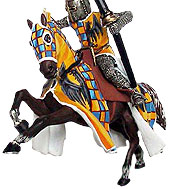| Dockings and Events |
|
| Museumship Vlotburg Castle in Doetinchem starts on 29.04. till 12.05.2008 |
 |
History of Doetinchem
Slangenburg CastleIt is known from archaeological finds of skulls, pottery shards, and flint arrowheads that the area was inhabited more than 11,000 years ago. These prehistoric hunters were followed by Celtic and Germanic tribes like the Franks and Saxons. Roman coins have been found and there is also archaeological evidence of the Normans having plundered the area.
The first reference to the name of Doetinchem comes in a document from the year 838 which mentions a ‘villa Duetinghem’, a settlement with a small church. In 887, there is another mention of ‘Deutinkem’, a fortress with a church which had been given to the then Bishop of Utrecht. The spelling has varied over the centuries, with ‘Duttichem’, ‘Duichingen’ and ‘Deutekom’ being just some examples.
For a long time Doetinchem remained a small place but around 1100 it started to grow and, after suffering several attempts by plunderers, a town wall was built. In 1236, Doetinchem was granted city rights (‘stadsrechten’) by Count Otto II of Gelre and Zutphen, and in return the town provided taxes and soldiers for the Count’s army. Also, the new city council published rules for the city, codified in the ‘Keurboek van Doetinchem’ (Rulebook of Doetinchem), which laid down severe punishments for infringements.
In 1226, Doetinchem faced increasing danger from plunderers, and so the city wall was raised by a metre. There were four barriers in the wall which, being weak points, were replaced over time by four large city-gates known as: the Hamburgerpoort (built 1302), the Waterpoort, the Gruitpoort, and the Hezenpoort. Later a moat was dug around the wall and a rampart was built in front; the city’s central windmill, the ‘walmolen’ (Dutch ‘wal’=rampart, ‘molen’=mill), stands on the remains of this rampart. Despite these defences, Doetinchem was besieged many times and during the Eighty Years' War (1568–1648) was besieged and conquered twice. However, eventually the walls became seen as redundant (or perhaps ineffective) and in 1672, they were torn down. However, it was not until the second half of the 19th century that the city-gates and most of the rampart were removed.
From its early years, Doetinchem had been an important marketplace for farmers to sell their wares; the market was held in the central square called the Simonsplein right up until the Second World War.
Doetinchem has had its fair share of disasters. Apart from the sieges mentioned above, in 1527 a large fire destroyed most of the city including the city archives (which means that many earlier dates in the history of Doetinchem are somewhat unreliable), and in 1580 most of the city was killed by plague. There was also occasional flooding.
Source: http://en.wikipedia.org/wiki/Doetinchem
  |
|
 |
|
| |
|
|
|

